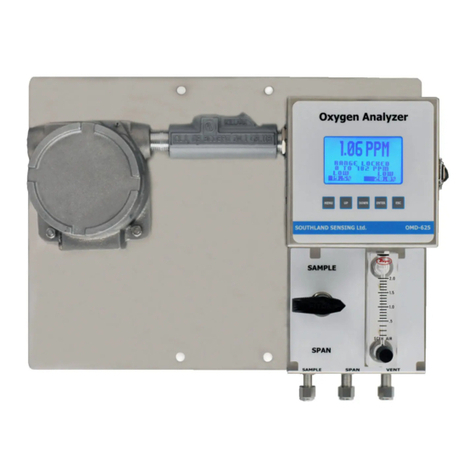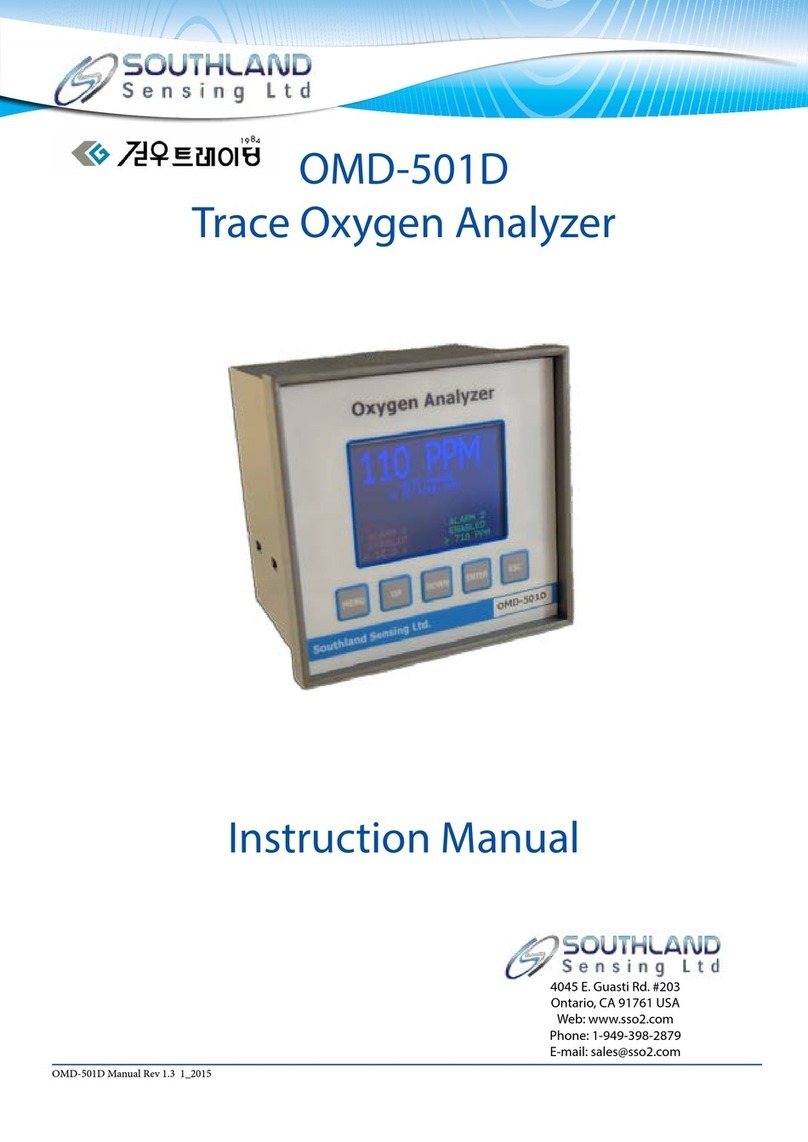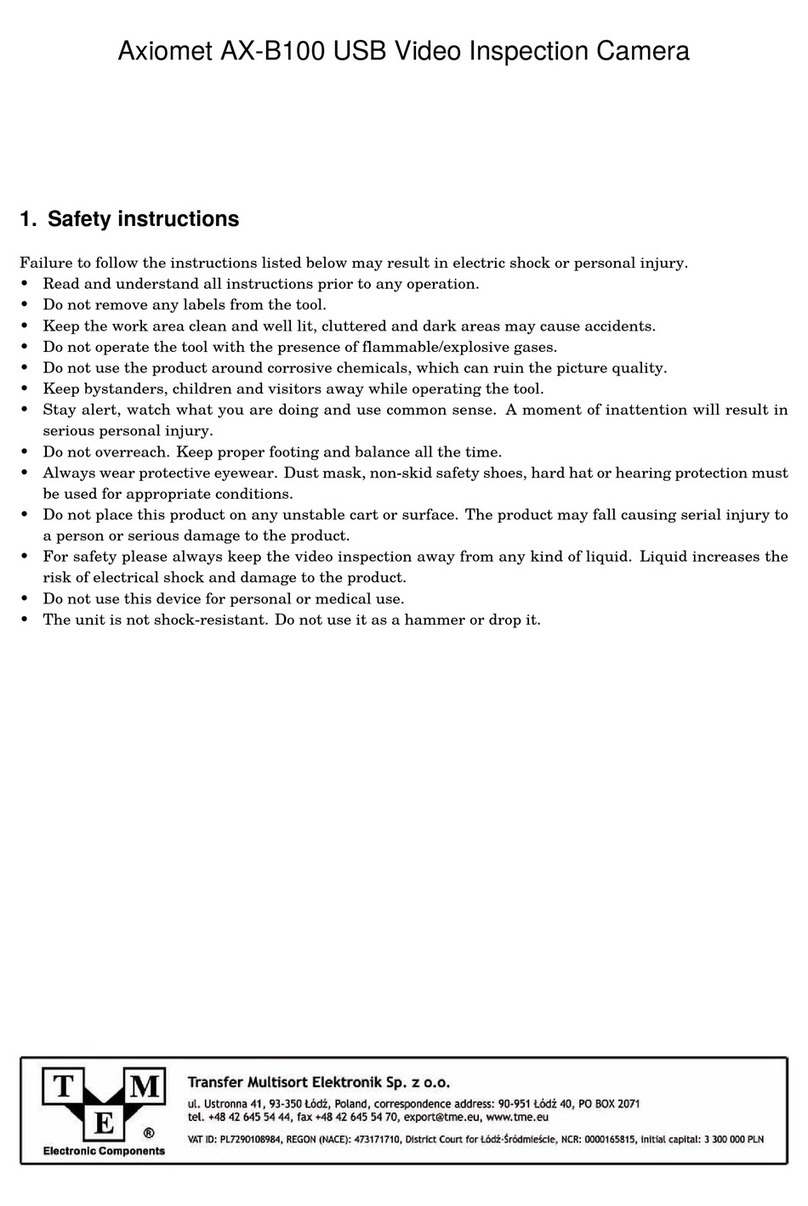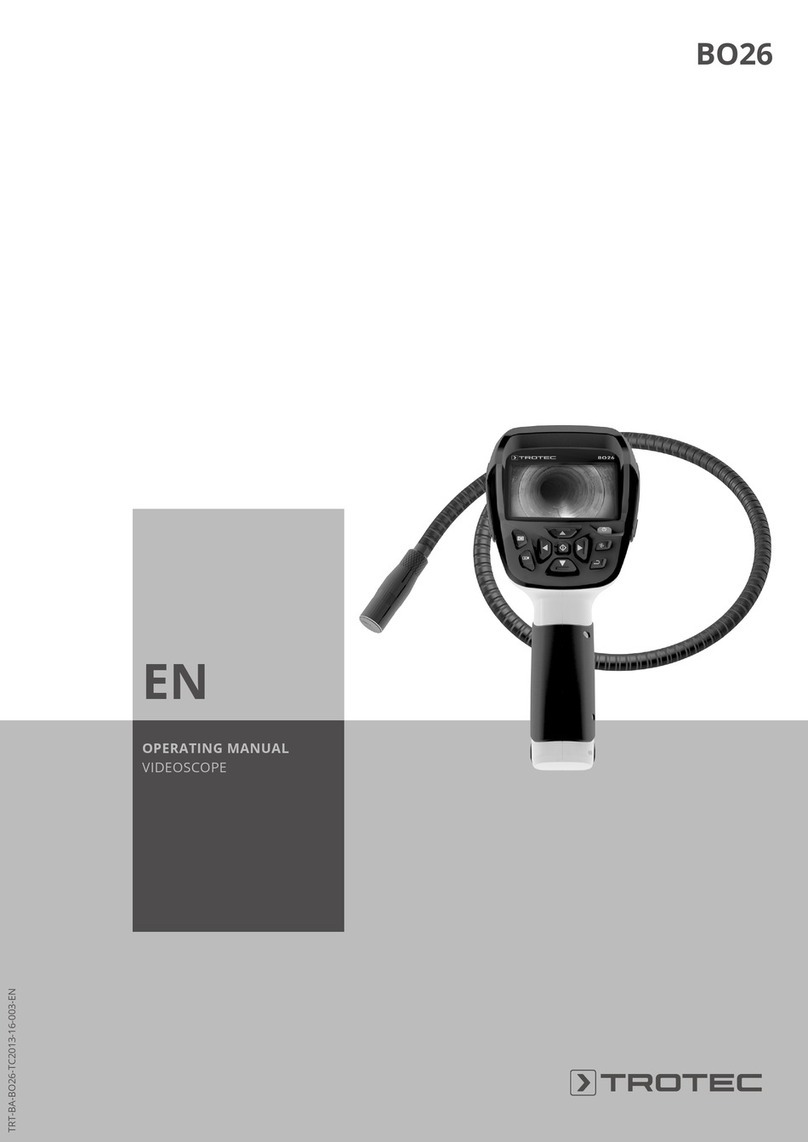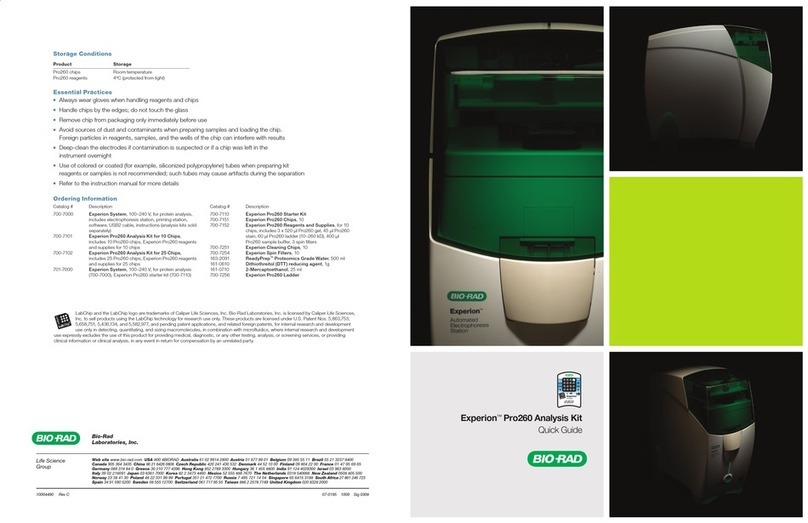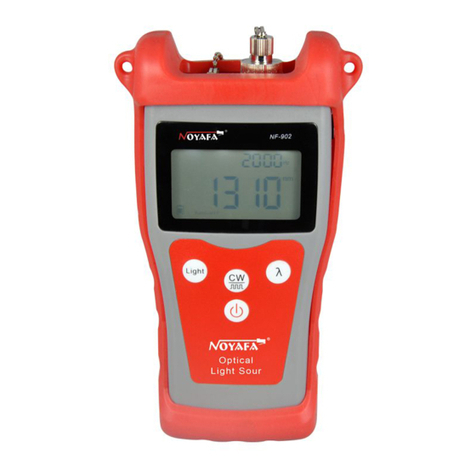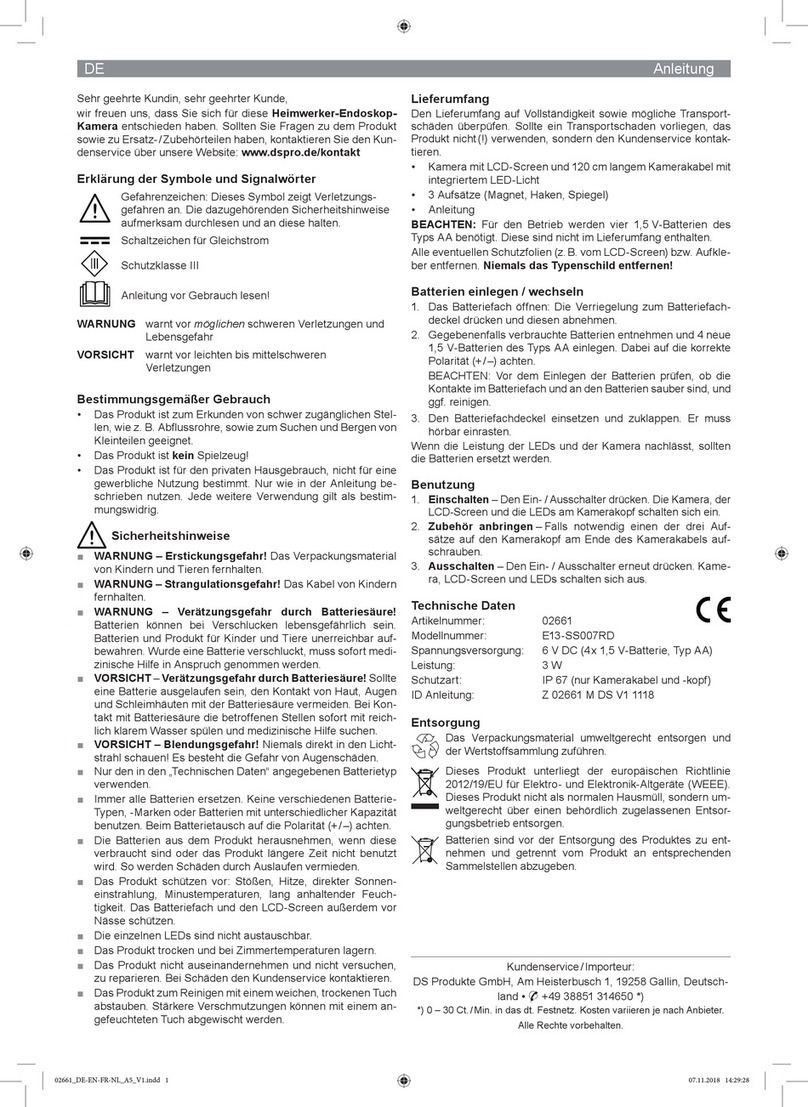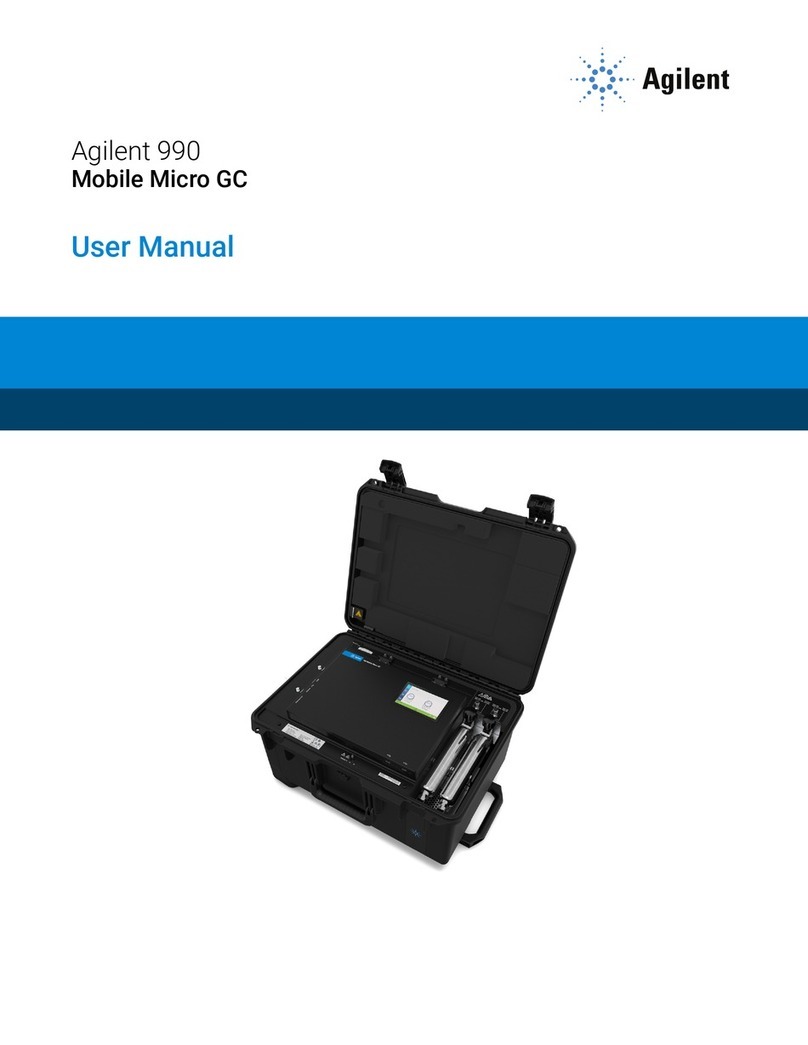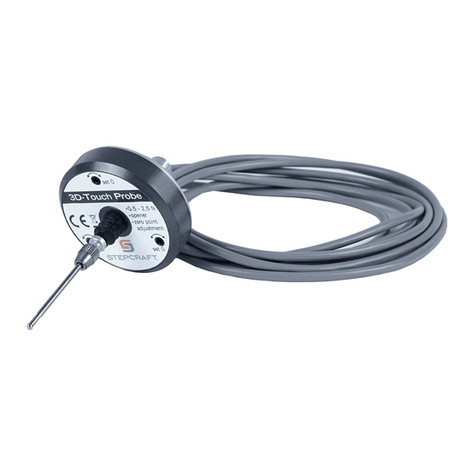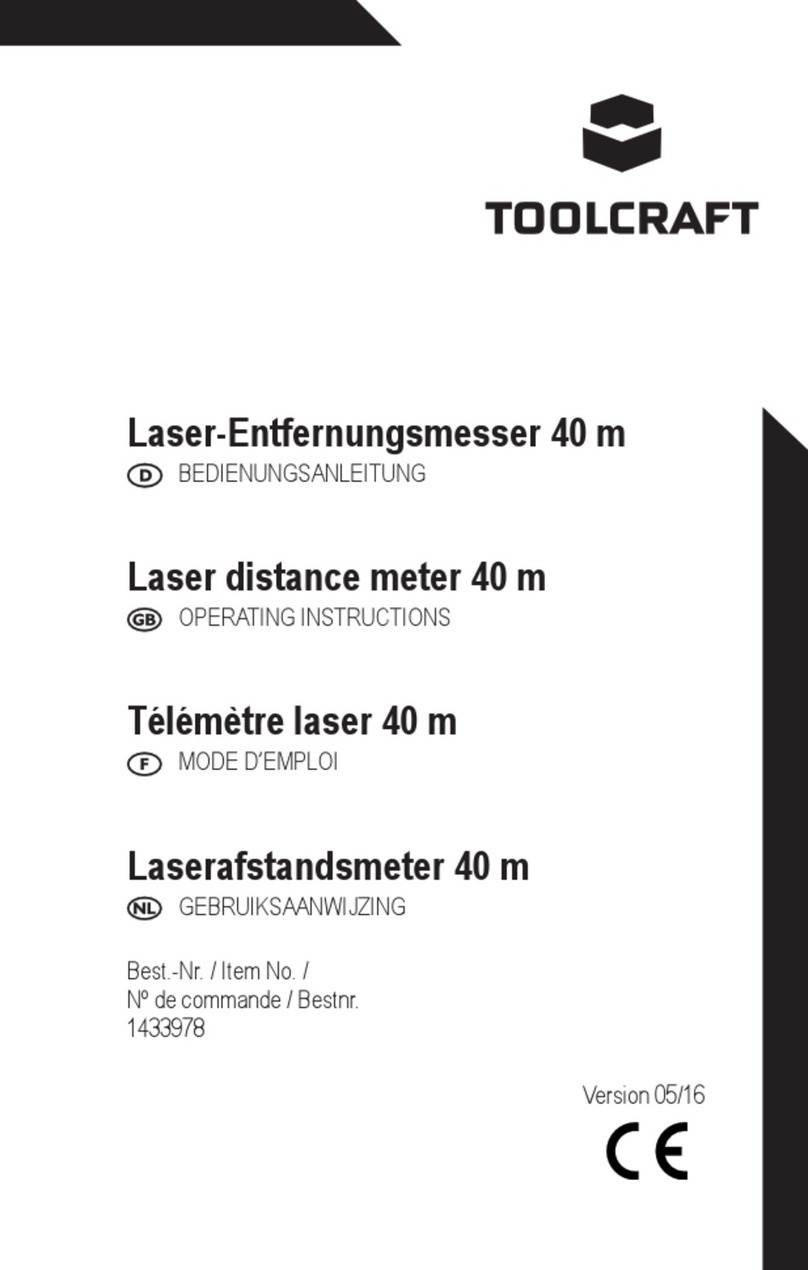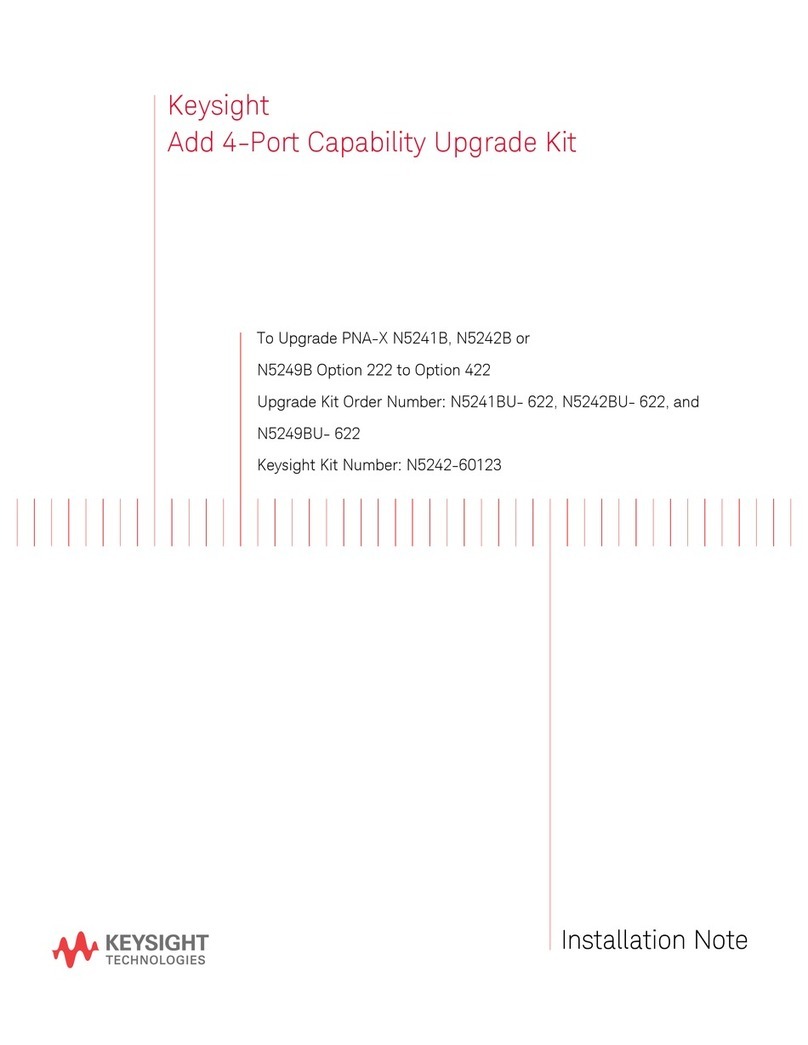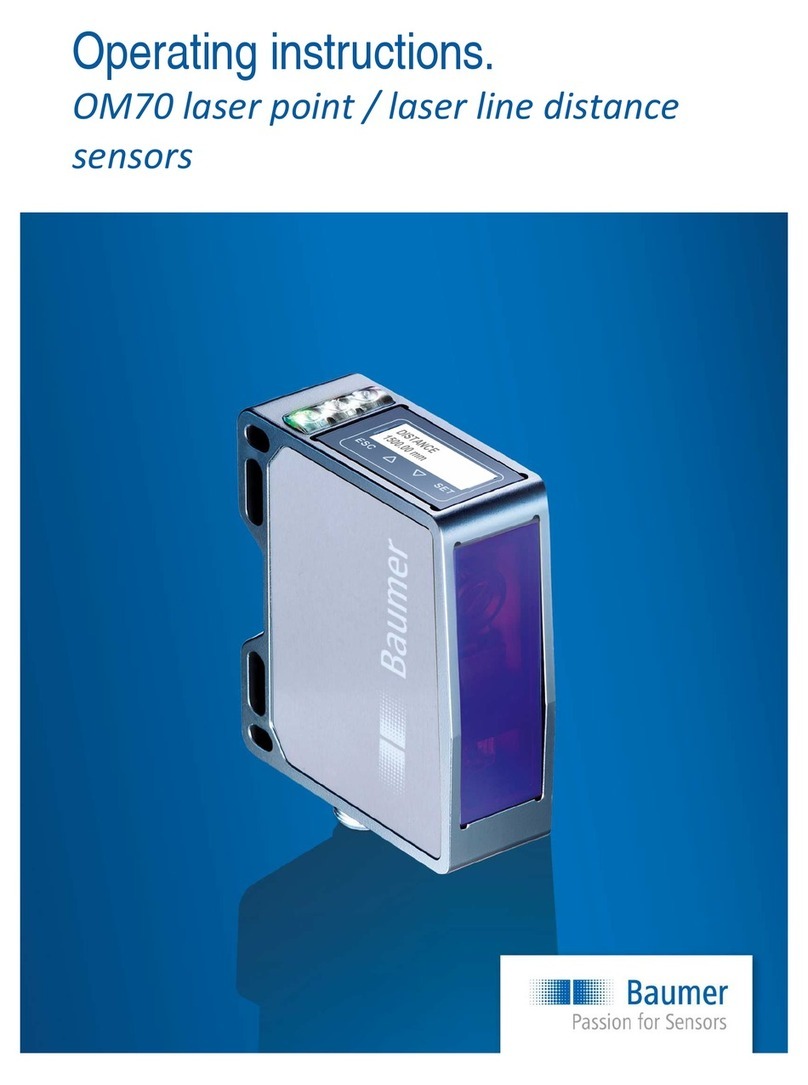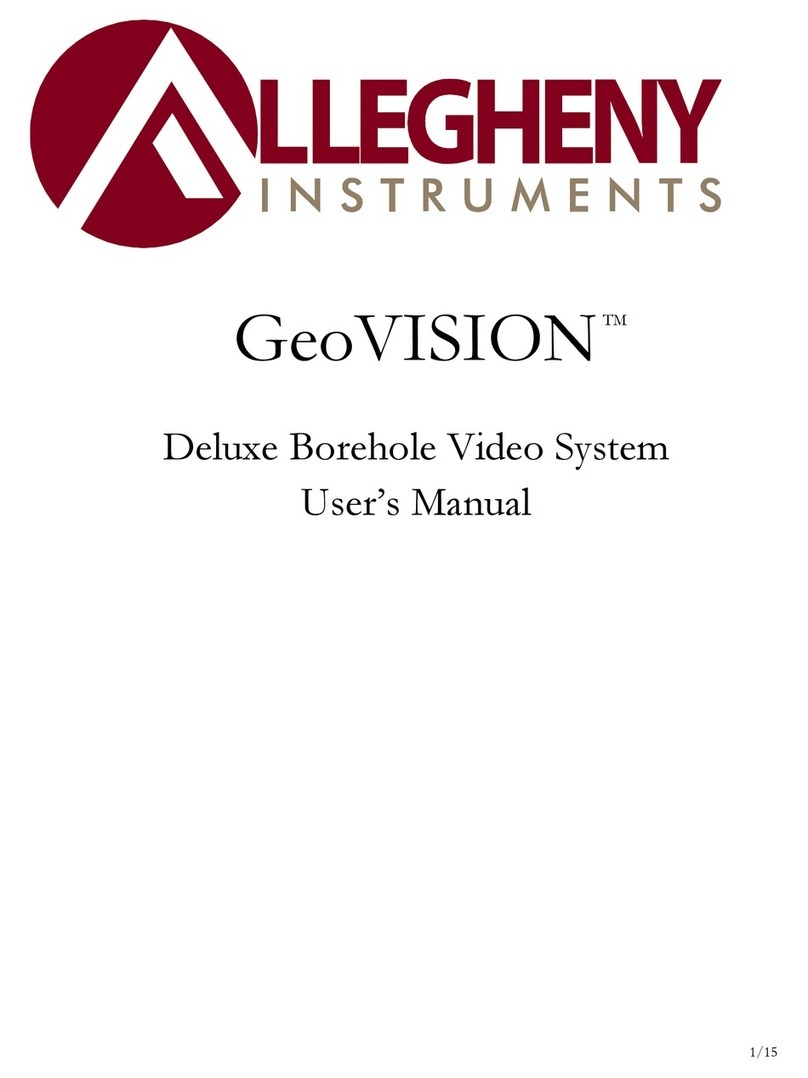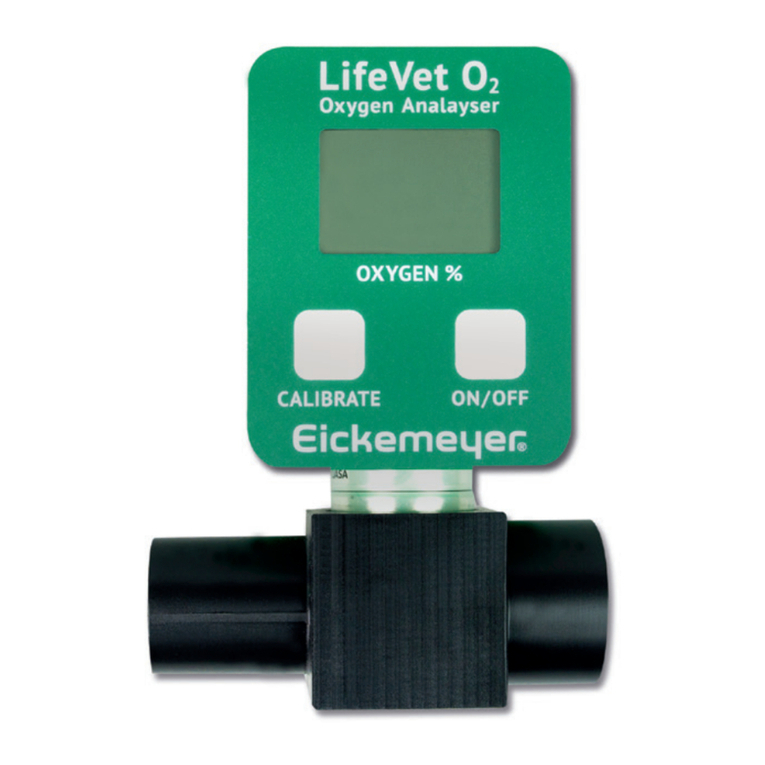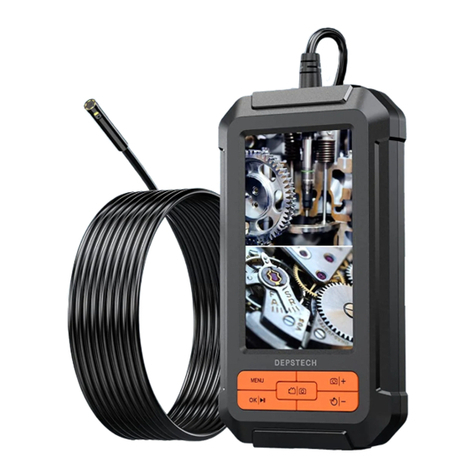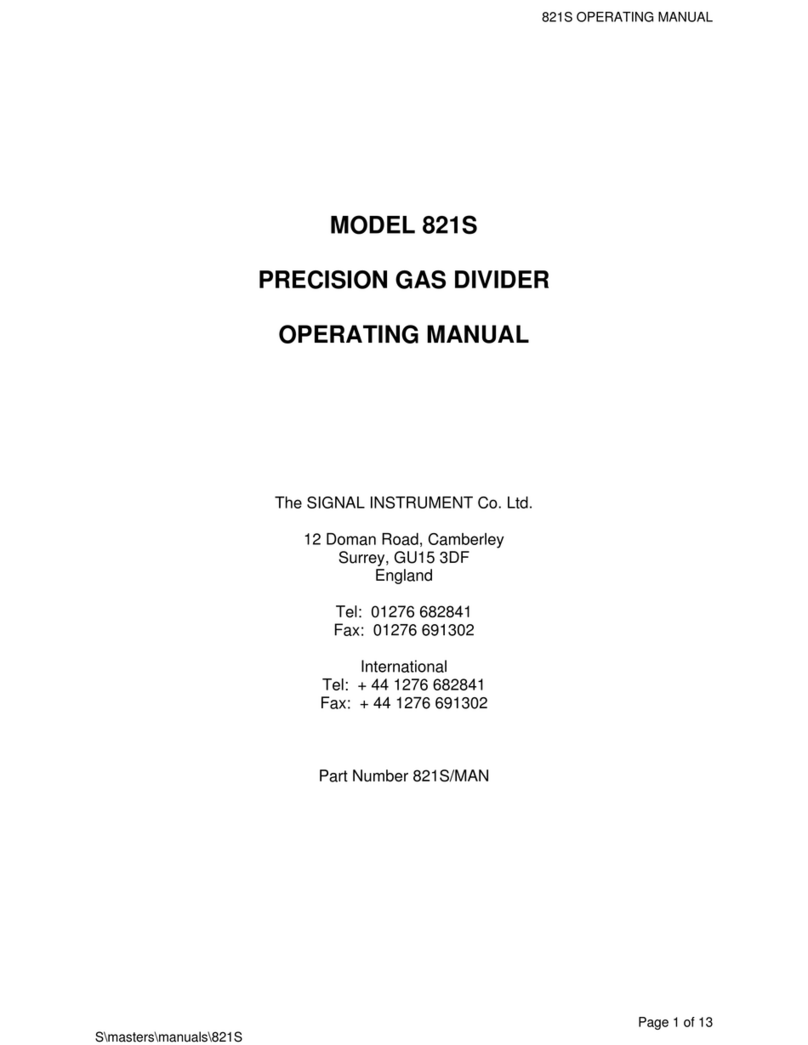Southland OMD-625 User manual

OMD-625
Oxygen Analyzer
Designed, Tested, and Assembled in California, USA
Rev 1.00 August 31st, 2022_DF
Instruction Manual
OMD-625 Oxygen Analyzer

Part 1 Introduction
Part 2 Installation
Part 3 Operation
Part 5 Annexures
Part 4 Maintenance
1.1 General Introduction
1.2 Principle of Operation - The Oxygen Sensor
1.3 OMD-625Specications
1.4.1 General Safety Information (VAC)
1.4.2 General Safety Information (VDC)
1.5 Location Installation Considerations
1.6 Safety Considerations
2.1 Receiving Your New Oxygen Analyzer
2.2 Mounting The Oxygen Analyzer
2.3.1 Electrical Connections (VAC)
2.3.2 Electrical Connections (VDC)
2.4 Gas Connections
2.5 Installing The Oxygen Sensor
2.6 Integral Sample System Flow Diagram
2.7 Sensor Selection
3.1 Understanding The Controls and Their Operation
3.2 Manual Range Output Adjustment
3.3 Analog Output 4 - 20mA or 1 - 5 VDC
3.4 Advanced Integral Alarms
3.5 Setting a Custom Range
3.6 Output Simulation
3.7 Output Calibration
4.1 Span Calibration Using Ambient Air
4.2 SpanCalibrationUsingCertiedSpanGas
4.3 Procedure for Replacing the Sensor
4.4 Troubleshooting
4.5 Zero Calibration
5.1 Spare Parts List
5.2 Warranty
5.3 Material Safety Data Sheets
5.4 ConformanceCerticate
5.5 Modbus Instructions
Designed, Tested, and Assembled in California, USA
Table of Contents
OMD-625 Oxygen Analyzer

1.1 General Introduction
The Southland Sensing OMD-625 Oxygen Analyzer is a microprocessor based online unit designed for
continous measurements in a variety of hazardous area applications and gas mixtures.
The analyzer was designed with the customer in mind, keeping the operations simple while still featur-
ingafastresponseandruggeddesign.Everyeorthasbeenmadetousemodernindustrialcompo-
nents and materials which has resulted in an advanced design, excellent performance, and an overall
low cost of ownership.
The analyzer has numerous options including PPM and Percent oxygen analysis. The unit can be con-
guredforVACorVDCpowerinputwithanisolatedanalog4-20mAor1-5VDCconcentrationoutput
and optional digital RS485 Modbus RTU output meeting most oxygen analysis applications.
Southland Sensing Ltd. appreciates your business and recommends reading through the complete
manual to be able to get the full experience from your new oxygen analyzer.
1.2 Principle of Operation - The Oxygen Sensor
The precision electrochemical oxygen sensor used in the OMD-625 is designed and manufactured by
Southland Sensing Ltd. under a strict quality procedure.
To understand how the oxygen analyzer functions, it is important to understand a little bit of the sen-
sor characteristics.
The active components in the precision electrochemical oxygen sensor are the anode, cathode, and
aqueous electrolyte which are all housed in the cell body. The oxygen molecules in the application
pass through the front sensing membrane into the electrolyte, where a chemical reaction occurs and a
raw electrical current is generated.
This electrical current is proportional to the amount of oxygen in the application. The analyzer then
processes this raw electronic signal, compensates for temperature and barometric pressure variations,
and converts the data into a parts-per-million or percent oxygen measurement value.
The oxygen concentration reading is then displayed in real time on the full backlit display and the user
can automate the control of their process using any of the output signals which can be run to a PLC or
other type of DCS system.
Precision Electrochemical Oxygen Sensor
Introduction
OMD-625 Oxygen Analyzer
Designed, Tested, and Assembled in California, USA

Designed for the Natural Gas Industry
Class 1, Div 1 Groups B, C, D
Custom Full Scale Range (i.e. 0 - 99.5 ppm)
Precision Fuel Cell Oxygen Sensor Technology
Large Backlight Display
Ability to Calibrate Analog Output
Measure Oxygen from 0.01ppm to 25%
Intuitive User Friendly Interface
Cost Eective and Low Maintenance
2 Congurable Alarm Relay Contacts
Output Sim (4mA, 8mA, 12mA, 16mA and 20mA)
Specications:
Accuracy: < +/-1% Full Scale Range*
Alarms: 2 Congurable Relay Contacts
Analyzer Range: 0 - 10/100/1000/10000ppm/25%
Optional Range 1: 0 - 1%,/5%/10%/25%/100%
Area Classication: Class 1, Div 1, Groups B,C,D
Sensor Enclosure Certication: ATEX Ex d IIC
Dimensions: 12” x 12” x 5.25”
Flow: 0.5 - 5.0 SCFH
Gas Connections: 1/4” Compression Tube
Output: Isolated 4 - 20mA or 1 - 5 VDC
Power: 12 - 24 VDC
100 - 240 VAC
Pressure 0.1 - 50 PSIG Inlet, vent to atm
Response Time: T90 in 10 Seconds
Sensor: Precision Fuel Cell
Temperature: -10 to 50 deg C
Warranty Sensor: 12 Months
Warranty Electronics: 12 Months
Weight: 21 lbs
*Accuracy at constant conditions
Applications:
“Inquiry for Application Expertise”
• Natural Gas Extraction & Pipelines
• Natural Gas Processing
• Acid (CO2) Gas Streams
• Inert, Hydrocarbon, Hydrogen Processing
• And Many Other Industrial Applications
Optional Congurations:
- Sample System Add-On Components
- Bi-Directional RS485 Modbus RTU
- Extreme Weather Packaging w/ Heater
ProductSpecicationSheet
OMD-625 Oxygen Analyzer
Hazardous Area Online Process Oxygen Analyzer w/Sample System
Designed, Tested, and Assembled in California, USA
Rev 1.15 June 29th, 2022_DF

OMD-625 Oxygen Analyzer Product Specications
Oxygen Analyzer: Oxygen Sensor Technology:
Order Information:
Standard Power Requirements:
Oxygen Sensors:
Record Part Number with selected options in Blank Indicated Area of Form
Model Number:
OMD-625 Oxygen Analyzer
OMD-625D Oxygen Analyzer (Delete Sample System, 1/8” Compression Tube Gas Inlets)
Selected Range & Sensor:
3T Trace Analysis Standard (TO2-133): 0 - 10ppm, 0 - 100ppm, 0 - 1000ppm, 0 - 10000 PPM 0 - 25%
4T Trace Analysis Standard (TO2-233): 0 - 10ppm, 0 - 100ppm, 0 - 1000ppm, 0 - 10000 PPM 0 - 25%
5T Trace Analysis < 500 PPM H2S (TO2-238): 0 - 10ppm, 0 - 100ppm, 0 - 1000ppm, 0 - 10000 PPM 0 - 25%
5P Percent Analysis Standard (PO2-160): 0 - 1%, 0 - 5%, 0 - 10%, 0 - 25%, 0 - 100%
6P Percent Analysis Standard (PO2-24): 0 - 1%, 0 - 5%, 0 - 10%, 0 - 25%, 0 - 100%
Electronics Package:
2 12 - 24V DC 2-wire Loop (delete backlight, delete alarm relay contacts)
4 12 - 24V DC 4-wire Power
7 100 - 240V AC Power
M 12 - 24V DC Power w/ Bi-Directional MODBUS RS485 RTU
OMD-625 - - -
The oxygen sensor used in the OMD-625 is based on the
galvanic electrochemical fuel cell principal. All oxygen sensors
are manufactured in house by Southland Sensing Ltd. under a
strict quality program.
Thestandardcellsareunaectedbyotherbackgroundgases
such as H2, He or Hydrocarbons. The acidic cells work well
when acid gases such as CO2 or natural gas are present. H2S
resistant sensors are available for sour gas streams with <500
PPM H2S.
The sensors are self-contained and minimal maintenance is
required - no need to clean electrodes or add electrolyte.
TheSSO2precisionoxygensensorsoerexcellentperfor-
mance, accuracy and stability while maximizing the expected
life.
TO2-133 PPM Oxygen Sensor: Trace Analysis, Standard
TO2-233 PPM Oxygen Sensor: Trace Analysis, Acidic
TO2-238 PPM Oxygen Sensor: Trace Analysis, < 500PPM H2S
PO2-160 Percent Oxygen Sensor: Percent Analysis, Standard
PO2-24 Percent Oxygen Sensor: Percent Analysis, Acidic
Oxygen sensors should be periodically calibrated. Factory
recommendation is every 2 - 3 months or as the application
dictates.Sensorsoerexcellentlinearitywithanaircalibra-
tion,orcalibratetoacertiedspangastomaximizeaccuracy.
The model OMD-625 oxygen analyzer combines a
rugged design with SSO2’s precision oxygen sen-
sors.Theresultisahighlyreliableandcosteec-
tive compact design with easy-to-use user interface
designedspecicallyforthenaturalgasindustry.
The oxygen analyzer is designed to meet standards
for Class 1, Div 1, Groups B, C, D installation.
The oxygen analyzer is isolated both on the power
input and analog output. This eliminates most
electronic gremlins seen with existing competitive
equipmentintheeld.
Standard ranges include 0 - 10ppm, 0 - 100ppm, 0 -
1000ppm, 0 - 10000ppm, 0 - 25%.
Optional Percent Analysis Ranges: 0 - 1%, 0 - 5%,
0 - 10%, 0 - 25%, 0 - 100%.
Custom Range: The unit comes with the ability to
customize a 6th range (i.e. 0 - 94.0 ppm).
Gas Connections:
4 1/4” Compression Tube Fittings
6 6mm Compression Tube Fittings
8 1/8” Compression Tube Fittings
Input Power: 12 - 24 V DC
Current Draw: 50 mA
** Optional power input choices available
Use This Part Number When Ordering
Designed, Tested, and Assembled in California, USA
Rev 1.15 June 29th, 2022_DF

1.4.1 General Safety & Installation (VAC)
This section summarizes the precautions applicable to the OMD-625 Oxygen Analyzer. Additional pre-
cautionsspecictothisanalyzerarecontainedinthefollowingsectionsofthemanual.Tooperatethe
analyzer safely and to obtain the best performance, follow the basic guidelines outlines in this owner’s
manual.
CAUTION:
WARNING:
CAUTION:
This symbol is used throughout the owner’s manual to warn and alert the
user of the presence of electrostatic discharge.
This symbol is used throughout the owner’s manual to caution and alert
the user to recommended safety and / or operating guidelines.
This symbol is used throughout the owner’s manual to caution and alert
the user that this device is operated on AC Voltage (VAC)
READ INSTRUCTIONS: Before operating the oxygen analyzer, read the instructions.
RETAIN INSTRUCTIONS: The safety precautions and operating instructions found in the owner’s
manual should be retained for future reference.
FOLLOW INSTRUCTIONS: Observe all precautions and operating instructions. Failure to do so may
result in personal injury or damage to the transmitter.
OXYGEN ANALYZER LABEL:
Introduction
OMD-625 Oxygen Analyzer
Designed, Tested, and Assembled in California, USA
Model Number: OMD-625
Serial Number: 0036785
Oxygen Analyzer
Voltage: 100 - 240 VAC
Max Current: 50mA
4045 E. Guasti Rd. #203 Ontario, CA 91761 USA
Ph: (949) 398-2879 Web: www.sso2.com
This section is for AC powered analyzers, if your analyzer is DC powered proceed to the next page.

1.4.2 General Safety & Installation (VDC)
This section summarizes the precautions applicable to the OMD-625 Oxygen Analyzer. Additional pre-
cautionsspecictothisanalyzerarecontainedinthefollowingsectionsofthemanual.Tooperatethe
analyzer safely and to obtain the best performance, follow the basic guidelines outlines in this owner’s
manual.
CAUTION:
WARNING:
CAUTION:
This symbol is used throughout the owner’s manual to warn and alert the
user of the presence of electrostatic discharge.
This symbol is used throughout the owner’s manual to caution and alert
the user to recommended safety and / or operating guidelines.
This symbol is used throughout the owner’s manual to caution and alert
the user that this device is operated on DC Voltage (VDC)
READ INSTRUCTIONS: Before operating the oxygen analyzer, read the instructions.
RETAIN INSTRUCTIONS: The safety precautions and operating instructions found in the owner’s
manual should be retained for future reference.
FOLLOW INSTRUCTIONS: Observe all precautions and operating instructions. Failure to do so may
result in personal injury or damage to the transmitter.
OXYGEN ANALYZER LABEL:
Introduction
OMD-625 Oxygen Analyzer
Designed, Tested, and Assembled in California, USA
Model Number: OMD-625
Serial Number: 0036785
Oxygen Analyzer
Voltage: 12 - 24 VDC
Max Current: 50mA
4045 E. Guasti Rd. #203 Ontario, CA 91761 USA
Ph: (949) 398-2879 Web: www.sso2.com
This section is for DC powered analyzers, if your analyzer is AC powered see the previous page.

1.5 Location Installation Considerations
The Southland Sensing OMD-625 Oxygen Analyzer is designed to be mounted on a wall or on a pipe
in a general purpose, Class 1 Division 1 or Class 1 Division 2 Group B, C, D area. When installed
outdoors in cold areas an optional integral heater is recommended as well as a heavy duty enclosure.
Consider also giving the analyzer a sun shield if it is going to be mounted in the direct sunlight.
Reference your local electrical authority for the proper installation.
Sealsarerequiredonthepowerandsignalconduletentries,whethertheareaclassicationisDivision
1 or Division 2. Reference your local electrical authority for the proper installation.
The analyzer is EMI / RFI protected, however it is good practice not to mount it too close to sources
of electrical interference such as large transformers, motor start contactors, relays, large pumps, etc.
Alsoavoidsubjectingtheanalyzertosignicantvibration.
Mount the unit at a suitable eye level to easily read the local display. Gas connections are located on
the top right side of the analyzer, ensure there is adequate room to hook up your gas lines.
1.6 Safety Considerations
The oxygen analyzer is designed for installation into either a general purpose area, or a Class 1 Divi-
sion 1 or a Class 1 Division 2 Group B, C, D area, but it is also designed so that a hazardous gas may
be introduced into the main sensing compartment. This gas may be of any group B, C or D.
The analyzer consists of two enclosures mounted on a single back panel. The small Adalet enclosure
on the left side is explosion-proof and contains the electrical connections for the user such as power,
alarms, analog output, and digital MODBUS output (if applicable). This explosion-proof enclosure also
contains the power supply and safety components for the other enclosure. The larger square enclo-
sure contains the analytical circuitry, the oxygen sensor, and the oxygen sensor housing. This circuitry
is designed for intrinsic safety and meets requirements for Class 1, Division 1, Groups B, C, D.
When installing a Class 1, Division 1, or Class 1, Division 2 device please follow your local electrical
codeshouldtheareaneedtobedeclassiedpriortoinstallation.
Designed, Tested, and Assembled in California, USA
Introduction
OMD-625 Oxygen Analyzer

2.1 Receiving Your New Oxygen Analyzer
As soon as you receive your new oxygen analyzer carefully unpack the unit and accessories and inspect
the interior and exterior of the analyzer for damage, and also verify the oxygen sensor is present.
CAUTION: Do not open the oxygen sensor packaging at this time. It is packed in a ni-
trogen purged bag and will be damaged if left exposed to ambient air for a prolonged
period of time. It is recommended that you read through the instruction manual
installation and operation sections before attempting to open the bag the oxygen
sensor is packed in. For questions, please contact the factory.
If damage to any portion of the new analyzer is present, stop and report damage to the shipping com-
pany as well as the factory.
The analyzer is shipped with all materials needed to install and prepare the system for operation. In
some instances, added sample system components are necessary to condition the gas sample before en-
teringthesensorhousing.SouthlandSensingoersfreeapplicationconsultationandweencourageyou
to take advantage of our engineers and their expertise.
It is also important to be mindful of EMI / RFI noise interference. Protection from EMI / RFI noise is im-
portant for accurate readings.
Installation
OMD-625 Oxygen Analyzer
Designed, Tested, and Assembled in California, USA

2.2 Mounting the Oxygen Analyzer
The OMD-625 is designed to be mounted on a wall or around a pipe. See below for the mounting dimen-
sions. If mounting in extreme temperature consider an enclosure and heater if necessary.
Refer to Part 3: Operation section of this instruction manual for more information on how to operate the
controls of this oxygen analyzer.
RefertoPart4:Maintenancesectionforanoverviewonhowtocalibratethedeviceusingacertied
span gas or ambient air.
A precision electrochemical oxygen sensor is included as a separate item and must be installed prior to
instrument use.
CAUTION: Do not open the nitrogen lled oxygen sensor bag until you have thoroughly read
the instruction manual and have made all gas and electrical connections. Please refer to
section 2.5 to reference installing the oxygen sensor into the sensor housing as well as sec-
tion 4.1 and 4.2 on SPAN Calibration.
Designed, Tested, and Assembled in California, USA
Installation
OMD-625 Oxygen Analyzer
OMD-625 Mounting Dimensions.
Sizes are in and inches.

2.3.1 Electrical Connections (VAC)
Incoming power/signal output
connections are made to the green
terminal block located on the
Back of the unit.
Donotsupplyvoltagemorethanspeciedin
this manual and noted on the analyzer label
inside of the unit.
Shielded cable is recommended when connect-
ing power and signal output.
Voltage: 100 - 240 VAC
Max Current: 50 mA
Avoid electrostatic discharge
** Note: This device is designed to be integrated
with a PLC or DCS system. The power input should
be 100 - 240 VAC. The electronics self generate a
4 - 20mA analog output.
If optional RS485 Modbus RTU is not included J3
connectors will not be loaded.
DO NOT hook up power to either the ANALOG
OUTPUT or RANGE ID as the circuit will be dam-
aged.
Follow your local electrical
authority for proper procedure.
It is also recommended to
make sure you have the proper seals for your
condulet to meet your required installation
consideration. Check with your local electrical
authority.
Designed, Tested, and Assembled in California, USA
Installation
OMD-625 Oxygen Analyzer
This section is for AC powered analyzers, if your analyzer is DC powered proceed to the next page.

2.3.2 Electrical Connections (VDC)
Incoming power/signal output
connections are made to the green
terminal block located on the
Back of the unit.
Donotsupplyvoltagemorethanspeciedin
this manual and noted on the analyzer label
inside of the unit.
Shielded cable is recommended when connect-
ing power and signal output.
Voltage: 10 - 28 VDC
Max Current: 50 mA
Avoid electrostatic discharge
** Note: This device is designed to be integrated
with a PLC or DCS system. The power input should
be 10 - 28 VDC. The electronics self generate a 4 -
20mA analog output.
If optional RS485 Modbus RTU is not included J3
connectors will not be loaded.
DO NOT hook up power to either the ANALOG
OUTPUT or RANGE ID as the circuit will be dam-
aged.
Follow your local electrical
authority for proper procedure.
It is also recommended to
make sure you have the proper seals for your
condulet to meet your required installation
consideration. Check with your local electrical
authority.
Designed, Tested, and Assembled in California, USA
Installation
OMD-625 Oxygen Analyzer
This section is for DC powered analyzers, if your analyzer is AC powered go to the previous page.

2.3.3 Electrical Connections (2-Wire)
Incoming power/signal output
connections are made to the green
terminal block located on the
Back of the unit.
Donotsupplyvoltagemorethanspeciedin
this manual and noted on the analyzer label
inside of the unit.
Shielded cable is recommended when connect-
ing power and signal output.
Voltage: 12 - 24 VDC
Max Current: 50 mA
Avoid electrostatic discharge
** Note: 4 - 20 mA signal will be transmitted with
the same wired as the poewr wires (J1).
Follow your local electrical
authority for proper procedure.
It is also recommended to
make sure you have the proper seals for your
condulet to meet your required installation
consideration. Check with your local electrical
authority.
Designed, Tested, and Assembled in California, USA
Installation
OMD-625 Oxygen Analyzer
This section is for 2-wire powered analyzers, if your analyzer is 6-wire powered see the previous two
pages.

2.4 Gas Connections
The OMD-625 can accept either a TO2-133 or TO2-223 (for CO2 applications, i.e. natural gas) oxygen
sensor for trace oxygen analysis. For percent measurement, the OMD-625 can accept either a PO2-160 or
PO2-24(forCO2applications)oxygensensor.Forapplicationswith<500ppmH2SweoeranH2Sresist-
ant sensor: the TO2-238 for trace oxygen analysis. For help selecting a sensor, contact your local sales rep
or the factory.
Prior to installing the sensor, it is important to make sure that the analyzer gas lines are hooked up and
theunitisreadytopurgewithazeroorprocessgas.Connectthezerogaslineandsetyourowbetween
0.50 - 5.0 SCFH.
To Install the Sensor:
- Open the front of the analyzer using the latch on the right side.
- Remove the cell holder cap by unscrewing the stainless steel collar.
- Lift up on the top of the sensor housing and set it to the side.
- Inspect O-ring for cracking, replace if necessary. Always lube your O-rings!
- Remove the sensor from its box. With scissors, open nitrogen purged packaging
and remove the sensor.
- Visually inspect sensor for damage, if damaged notify the factory immediately.
- Remove the shorting tab across the back of the sensor circuit board (red
tape).
- Place the sensor inside the housing with the metal mesh screen facing down and
the circuit board contacts facing up.
- Return upper portion of the sensor housing to the stainless steel bottom. Tighten
collar. Hand tight is acceptable to create an airtight seal.
- Immediately start purge of zero gas.
- If the analyzer has not been calibrated, refer to section 4.1 for more information.
** Sensor should not be exposed to ambient air for more than 2 minutes. Extended periods of
exposure can damage the low end sensitivity and response time.
CAUTION: Prior to installing the oxygen sensor read section 4.1 on per-
forming a span calibration.
Oxygen Sensor Front and Rear View
2.5 Installing the Oxygen Sensor
GasConnectionsaremadeviacompressiontubettingsdirectlyontheanalyzer.Varioustubettings
sizesareavailable,checkwiththebuildsheetforspecicgasconnectionsizes.
Designed, Tested, and Assembled in California, USA
Installation
OMD-625 Oxygen Analyzer

2.6 Integral Sample System Flow Diagram
Southland Sensing Ltd. strives to select the highest quality sample system components in the market.
Allgasconnectionsaremadeviacompressiontubettings.Ourvalvesarehighqualityleaktightwhich
werigorouslytestinourenvironmentalchamber.Ourowindicators/owmetersarefromDwyer,an
industryrecognizedleaderinowcontrolWhendealingwithcriticalapplicationssuchaspetrochemical
processing and natural gas extraction, we want to make sure we can deliver a high quality sample system
and we do so by partnering with some of the best brands in the market.
Along with our standard sample system as shown below, we can also custom design sample systems to
meetuniqueapplicationsincludingtheadditionalofmoisturelters,pressureregulators,H2Sscrubbers,
etc. For more information on a custom solution for your application, please contact your local distributor
or the factor.
Designed, Tested, and Assembled in California, USA
Installation
OMD-625 Oxygen Analyzer
3-Way
Valve
Sample In
Span In
Flow
Meter
Sensor
Housing
Vent

3.1 Understanding the Controls and their Operation
The OMD-625 Oxygen Analyzer is a feature packed unit with an easy-to-use menu interface. The key
attributes within the menu are the ability to select a measurement range manually or using the auto-
range mode, to calibrate the unit with a known gas, also referred to as a SPAN Calibration or SPAN
CAL, and to perform a zero calibration (if necessary, for most applications it is not required).
All features are programmable / selectable through the MENU button. The UP / DOWN buttons will
allow you to select your set points and the ENTER button saves the data. If you want to cancel your
selection, or return to the previous screen the escape key ESC will allow you to do this. Once the unit
starts up, the following home screen will appear:
Current Oxygen Reading
Identier,Manual
or Auto Range
Operation
OMD-625 Oxygen Analyzer
Designed, Tested, and Assembled in California, USA
Alarm 2 Setting
Alarm 1 Setting
Alarm 1 O2 Level Alarm 2 Range
Operating Range

3.2 Measurement Range Overview
TheOMD-625oxygenanalyzerallowstheusertoeldselect5availableranges-customrangescan
be programmed in the built-in menu, see Section 3.5. These ranges can be selected in manual mode,
meaning they are locked into that range by the user, or they can be set to auto-range so the analyzer
will adjust to give you the best full scale resolution.
When using the Manual-Range mode the Manual Range locks the 4 - 20mA output to a single range,
and the display will continue to operate in auto-range mode giving the user the full spectrum of
analysis ranges. Other manufactures lock the display as well - the problem is if you over-range and
the display is locked you have no idea what your oxygen value is. The OMD-625 solves this issue with
a display that auto-ranges and the ability to manually lock the analog outputs.
To select Auto-Range or Manual-Range Mode, from the HOME screen, press the MENU key and the
display will indicate:
Using the UP / DOWN keys to change which option is highlighted
will allow the user to select AUTO-RANGE, which will all the unit to
cyclethroughallveranges,orMANUALRANGEwhichwillallow
theusertoselectaspecicrange.
Decide which option will work best for your application.
Highlight the selection and press the ENTER key. If you
have selected the AUTO RANGE option, it will blink for a
second indicating this was selected. If you selected the
MANUAL RANGE option, the following screen will be brought up:
**Note:AnalyzerscanbeconguredforTrace,Percentand
PurityAnalysissoyourrangesmightbedierent.
Trace: 0 - 10ppm, 0 - 100ppm, 0 - 1000ppm, 0 - 10000ppm, 0 - 25%
Percent: 0 - 1%, 0 - 5%, 0 - 10%, 0 - 25%, 0 - 100%
If a custom range has been set, it will appear below the 0 - 10 ppm
range.
Use the UP / DOWN keys to highlight the range to be selected and press
the ENTER key. The selected range will blink for a second indicating the range has been selected.
Press the ESC key to move back to the previous screen.
Designed, Tested, and Assembled in California, USA
Operation
OMD-625 Oxygen Analyzer
MANUAL RANGE
0 - 25%
0 - 10000 PPM
0 - 1000 PPM
0 - 100 PPM
0 - 10 PPM
MAIN MENU
AUTO RANGE
MANUAL RANGE
SPAN CAL
ZERO CAL
ALARM 1
ALARM 2
SYSTEM

3.3 Analog Output
** Caution: Integral 4 - 20mA converters are internally powered and do not re-
quire external power. DO NOT supply any voltage across these terminals as the
4 - 20mA output will be damaged. It is also important to assure proper ground-
ing of the external recording device such as a PLC, DCS prior to connecting the 4
- 20mA.
The OMD-625 is equipped with a 4 - 20mA analog output. When physically connecting the analog
output, refer to the circuit board pinout in section 2.3
To verify the signal output of the 4 - 20mA circuit is working properly, connect an ammeter across the
(+) and (-) pins. With no oxygen sensor connected, it should read approximately 4 mA. If a sensor is
installed you can verify the signal matches with the following formula:
Signal Output (mA) = [(Reading / Full Scale Range) x 16] + 4
For example, if we are reading 500ppm on the 1000 ppm range:
Signal Output (mA) = [(500/1000) x 16] + 4
Signal Output (mA) = 12mA
SomePLC’sprefera1-5VDCanalogoutput.Theoutputcanbeconguredforeither4-20mAor
1-5 VDC using the built-in menu. Enter the MENU and select SYSTEM, select OUTPUT TYPE and it will
allow you to select either analog output (4 - 20mA or 1 - 5V DC).
Designed, Tested, and Assembled in California, USA
Operation
OMD-625 Oxygen Analyzer

The OMD-625 Oxygen Analyzer is equiped with 2 advanced relay contact alarms. These alarms can
beconguredasnormallyopenornormallyclosed,haveadelaymodebuilt-in,andcanbeenabled
or disabled when necessary.
The alarms are rated at 5A @ 230VAC. If you are connecting to solenoid valves or a pump whose
currentcanuctuategreatly,itisadviseabletouseaslaverelaytoensurenodamageoccurstothe
electronics.
The procedure for setting Alarm 1 and Alarm 2 is identical. To begin,
highlightthealarmcongurationyouwanttoadjustusing
the UP / DOWN keys in the analyzer MENU and press ENTER.
To adjust the value setpoint of ALARM 1 simply highlight ALARM 1
and press ENTER. Select the ADJUST ALARM option, where you
will be able to adjust the levels using the UP / DOWN buttons. To set
a PPM level alarm simply hold the DOWN button until you get below
1%. To set the alarm press ENTER.
The alarm function allows the user to set the alarm to trigger the relay
contacts as a HIGH alarm or a LOW alarm. Simply
open the ALARM 1 menu and UP or DOWN to meet your
requirements.
The alarm has a built in DELAY TIME. This is ideal to use when you
are working on your process and do not want to have the alarm relay
contacts trip. You will set this in a similar fashion to setting the alarm.
The DELAY TIME is in minutes, so adjust the value accordingly.
The alarm can also be enabled / disabled should it be hooked up but
not required. Highlight ALARM ON/OFF using the UP / Down keys to
and press the ENTER key.
The alarms can function as normally open or normally closed. This
selection will be choosen when hooking up the wiring, it is not
completed through the software. See the wiring diagram in section 2.4
for more information.
If you any questions about the ALARM functions should arise, please
contact the factory for assistance or technical questions.
3.4 Advanced Integral Alarms
Operation
OMD-625 Oxygen Analyzer
Designed, Tested, and Assembled in California, USA
ALARM 1 MENU
ALARM ON/OFF
ALARM TYPE
ADJUST ALARM
DELAY MODE
MAIN MENU
AUTO RANGE
MANUAL RANGE
SPAN CAL
ZERO CAL
ALARM 1
ALARM 2
SYSTEM

The OMD-625 Oxygen Analyzer can have a custom range programmed into it in case you need a
specicnon-standardrange.Onceyouhavesetyourcustomrange,youcanselectitintheManual
Range menu to lock the 4-20 mA output to that range.
To set a custom range, perform the following steps:
3.5 Setting a Custom Range
Operation
OMD-625 Oxygen Analyzer
Designed, Tested, and Assembled in California, USA
SYSTEM MENU
OUTPUT SIM
OUTPUT CAL
MODBUS ID
CUSTOM RANGE
995 PPM
UP-INCREASE
DOWN-DECREASE
ENTER TO CAL
ESC TO EXIT
Press the MENU button to go into the onboard menu. Use the UP/
DOWN buttons to scroll down to SYSTEM and press the ENTER button.
Scroll down to highlight CUSTOM RANGE and press ENTER.
The value shown will be the upper value of the range, in this case the
custom range is going to be 0-995 PPM. Use the UP button to increase
the value, and the DOWN button to decrease it. Press ENTER to lock in
the value, or ESC to return to the menu.
MAIN MENU
AUTO RANGE
MANUAL RANGE
SPAN CAL
ZERO CAL
ALARM 1
ALARM 2
SYSTEM
Other manuals for OMD-625
1
Table of contents
Other Southland Analytical Instrument manuals

